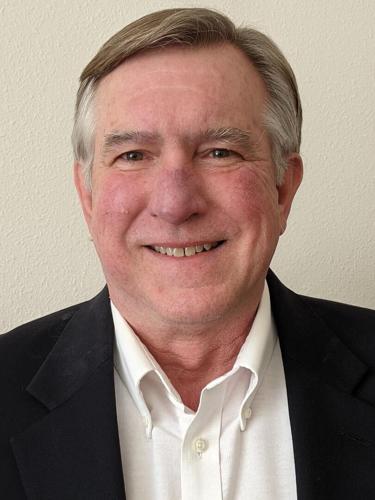Off target on ozone

Our state’s air-quality agencies have posted our ozone results for 2025, and once again, the official ozone levels for Front Range Colorado exceed allowable federal levels.
But this time there is a difference. It turns out wildfires are responsible for some of our highest ozone days. Federal regulators will allow Colorado to exclude those readings from our official ozone levels — if our state agencies request it. Here’s the first question: Why haven’t those agencies already done so?
If the agencies don’t act, there is no possible way we will achieve the national ozone standard when the U.S. Environmental Protection Agency (EPA) reviews our ozone levels in 2027.
This is a big deal. Everyone should be concerned about Colorado achieving the ozone standard, because if we don’t, we will be reclassified from our current “severe” non-attainment to “extreme” non-attainment — and the EPA will require the state to implement new transportation congestion controls.
And that just may be Gov. Jared Polis’s goal. Are you ready to let legislators tell you when you’re allowed to drive your own car?
Taking action
In 2027, the EPA will use the three-year average of the ozone levels from 2024, 2025, and 2026 to determine whether we met the ozone standard of 75 parts per billion (ppb).
Several days in 2024 had very high ozone levels due to wildfires, and even though levels were relatively low in 2025, some of the highest ozone days were again caused by wildfires. Since we have no control over those ozone levels, the EPA is willing to exclude days with high ozone caused by wildfires from the official readings.
But if we want the EPA to consider excluding days with high ozone due to wildfires, our state agencies have to present evidence of the wildfire influence to the EPA for every day claimed to be a wildfire day. Our agencies haven’t done that.
As a result, with wildfire days included for 2024 and 2025, the only way we can achieve the standard is if the official ozone levels next year are much lower than they have ever been for the last 30 ozone seasons, and there is no chance that will happen.
This is no small matter. There were 19 obvious wildfire days in 2024. If all 19 days were eliminated, the highest ozone reading would be 73 ppb instead of 88 ppb — and we would meet the 75 ppb standard for 2024. It does not matter if there might have been high ozone on those days even without wildfires. That’s not the way it works.
To have the best chance of meeting the standard, we need the agencies to exclude the wildfire days from 2025 as well. Even though ozone levels were relatively low in 2025, official ozone levels could be even lower by eliminating wildfire days, which would reduce the average of ozone levels for 2024, 2025 and 2026.
For example, on May 10 this year, every monitor in the Front Range non-attainment area except Chatfield and Highland had one of the highest ozone days of the year even though temperatures were fairly cool, in the low to mid 70’s. Consider the odds that monitors as far apart as Black Hawk, Boulder Reservoir, and Aurora Reservoir would all have elevated ozone levels on the same day, and they all had exactly the same ozone level. This was a wildfire day.
On June 19, every monitor from Ft. Collins down to Loveland and Greeley had one of the highest ozone days of the year. In addition, ozone hit 90 ppb at Greeley, and ozone never hits 90 ppb at Greeley. By way of contrast, there wasn’t even one monitor south of Berthoud where the ozone level exceeded 70 ppb. This was a wildfire day for the northern monitors.
Unfortunately, the agencies have a new computer program that tells them that wildfires had no influence on ozone readings on these two days, because monitors did not detect ground-level smoke. The agencies should know that there does not need to be ground-level smoke for wildfires to influence ozone levels. The gaseous emissions from wildfires can reach ground level through vertical mixing even if the actual smoke is a thousand feet up.
It is disappointing that the agencies are now basing wildfire determinations exclusively on a program that obviously does not work rather than using science, but that may be the point.
The question here is whether the agencies are just incompetent, or Polis has directed them to keep the official ozone levels high by using whatever means are available, including citing faulty computer programs.
If you don’t want legislators telling you when you are allowed to drive your own car, now is the time to contact the Polis administration and urge them to direct the agencies to exclude all of the wildfire days for 2024 and 2025.
Everyone should take another look at the Employee Traffic Reduction Program (ETRP) proposed in 2021. The program would have forced larger companies to prohibit 40% of their employees from driving themselves to work alone. Is this what we want from our government?
Legislators actually bragged that the ETRP program would disrupt the commute for hundreds of thousands of employees at larger companies, and they claimed it was justified because we had high ozone levels. They were far less vocal about the fact that the program would reduce emissions that cause ozone by less than one-half of 1%, and the program would have no measurable effect on reducing ozone.
If the air-quality agencies don’t act, it is possible that legislators may try to introduce the ETRP program again.
The ozone pretext
Consider this. As long as we have high ozone, the governor can use those readings to “justify” any project he wants. For example, since we have high ozone, he claims we need to spend more than $3 billion for Front Range rail to reduce ozone, even though the state’s own website shows that, in the best-case scenario, they will have only 6,900 riders per day during the week. That’s compared to over 400,000 individual motor-vehicle trips on I-25 every day. At best, Front Range rail will reduce highway vehicle trips by less than 2%, and that will have no measurable effect on reducing ozone.
Polis has made it clear that he is personally interested in Front Range rail. Has he directed the agencies to make absolutely certain that we are reclassified as “extreme” non-attainment so that Front Range rail can be included as one component of the required transportation congestion controls? Is that why the agencies are doing nothing to exclude wildfire days?
Polis has also weaponized ozone. In 2023, he “declared” that emissions of nitrogen oxides (NOx) from oil and gas facilities were causing “almost half” of the ozone in the Denver metro area, and he issued executive orders that oil and gas had to reduce NOx emissions.
To justify his attack on oil and gas, Polis referenced a page in the State Implementation Plan (SIP) for reducing ozone, which was written by the state’s air-quality agencies. The SIP shows that oil and gas facilities emit almost half of the NOx produced in the non-attainment area, but the facilities are spread out over more than 1,500 square miles. Realistically, the vast majority of the facilities are so far away that their emissions have no chance of moving into the Denver metro area.
In fact, if Polis had bothered to read the next chapter of that same SIP, he would have seen that the agencies included an analysis that showed that oil and gas accounts for only 3.4% of the ozone in the Denver area, which is a long way from “almost half.”
It is not clear why Polis would make a declaration that was so obviously false. He even cited the very document that showed he was wrong. Why didn’t the air-quality agencies that wrote the SIP correct him? Are they so incompetent that they did not understand what was in the SIP they wrote? Were they scared of contradicting the boss? Or did they mention it to Polis, and he told them to keep it quiet?
Has Polis directed the agencies to keep official ozone levels high so that he can use the ozone for additional attacks if he so chooses?
The directors of the two air-quality agencies are not engineers. In fact, it is not clear whether there is even one air-quality engineer on staff who has actual field experience locating and controlling air pollution sources.
If Polis actually wanted to reduce ozone, he could have decided that the agencies should be run by air-quality engineers who had actual field experience, or he could have required the agencies to hire experienced air-quality engineers to get the job done. He didn’t, and they didn’t. So, we still have high ozone, and that may be the goal.
Scapegoating oil & gas
Since the agencies do not have experienced field engineers on staff, they have issued “stories” that they expect the public to believe instead of establishing and presenting scientific facts to show how to reduce ozone. The longest running story has been that oil and gas facilities are a major cause of ozone, but the agencies have overwhelming proof that they are not.
The agencies have monitors at Greeley and LaSalle that are surrounded by thousands of oil and gas facilities, but those two monitors have some of the lowest ozone levels in the non-attainment area. That’s because emissions from oil and gas are not causing high ozone.
The monitor at LaSalle was moved from Platteville, which is more or less at the center of oil and gas production. Before being moved, the monitor included wind direction. Overnight, NOx levels at Platteville were generally in single digits, but occasionally exceeded 10 ppb. On almost every afternoon during ozone season, regardless of which way the wind was blowing, NOx levels at Platteville dropped to zero. Even with thousands of oil and gas facilities within a few miles in every direction, there was no NOx at Platteville in the afternoon, when ozone forms.
In spite of Polis’s “declaration,” NOx from oil and gas is not causing high ozone in Denver, because there isn’t any. The monitor at Platteville proved that all of the NOx from oil and gas reacts very quickly and has no chance of reaching Denver.
The NOx from oil and gas was not causing high ozone at Platteville, either. Platteville also had some of the lowest ozone levels in the area.
Instead, the highest NOx levels in the metro area by far are recorded at the Welby monitor, just south of Thornton. The NOx levels rarely exceed 5 ppb when the wind is from the northeast, from the direction of oil and gas. However, overnight, when the wind is from the southwest, Welby has the highest NOx levels in the area, even from 10 pm to 6 am.
The high NOx at Welby is not a secret. The monitor was turned on March 23, 2008. The very next day, with the wind from the southwest, the NOx level hit 230 ppb. Compare that to 10 ppb at Platteville.
The Welby monitor has recorded the highest NOx levels in the non-attainment area since 2008, but the agencies don’t even acknowledge it. The NOx that causes the high ozone levels is coming from the Denver area, not from oil and gas, but the agencies don’t seem to care.
Why has Polis allowed the agencies to continue making up “stories” about what is causing high ozone rather than finding out where the ozone is really coming from — unless he wants ozone readings to remain high?
If there is any consideration about actually reducing ozone in the Denver area, the agencies need to determine what is causing the high NOx levels at Welby. Right now, however, we have a more urgent concern.
If we don’t want legislators telling us when we are allowed to drive our cars, or imposing other draconian restrictions, we need the state’s air-quality agencies to do their jobs and exclude the wildfire days for 2024 and 2025 from our official ozone levels. If they refuse to do it, they should at least own up to it — and explain why.
Barney Strobel is a retired chemical engineer in Centennial. He worked as a field engineer in air-pollution control for 12 years.



